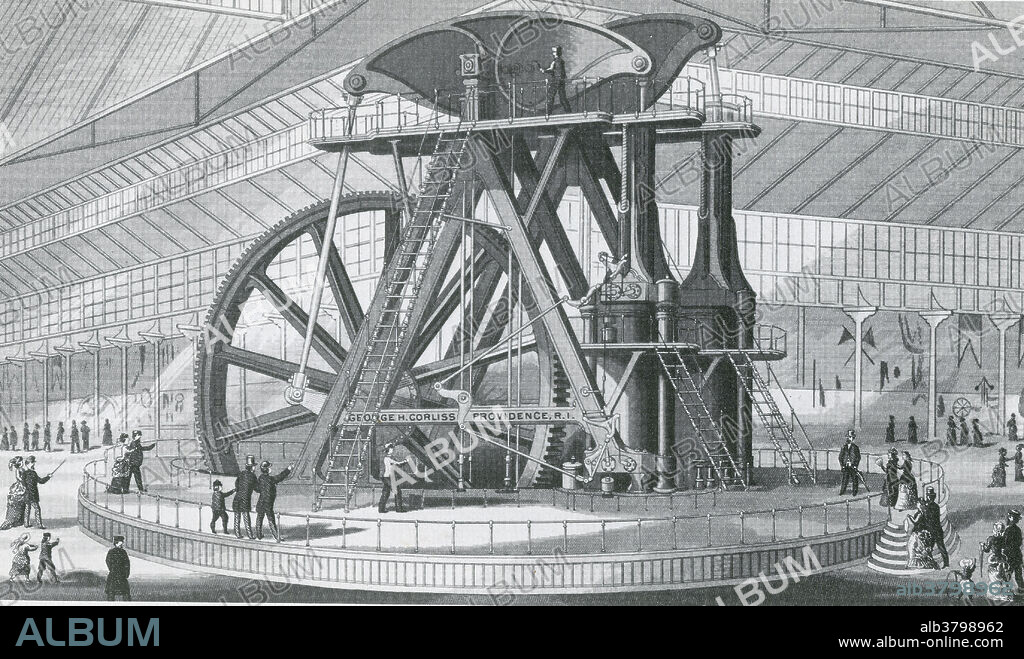alb3798962
Corliss Centennial Engine, 1876

|
Add to another lightbox |
|
Add to another lightbox |



Buy this image.
Select the use:

Title:
Corliss Centennial Engine, 1876
Caption:
The Corliss Centennial Engine was an all-inclusive, specially built rotative beam engine that powered virtually all of the exhibits at the Centennial Exposition in Philadelphia in 1876 through shafts totalling over a mile in length. Switched on by President Ulysses Grant and Emperor Dom Pedro of Brazil, the engine was in public view for the duration of the fair. The Centennial Engine was 45 feet tall, had a flywheel 30 feet in diameter, and produced 1,400 horsepower. A Corliss steam engine (or Corliss engine) is a steam engine, fitted with rotary valves and with variable valve timing patented in 1849, invented by and named after the American engineer George Henry Corliss.
Credit:
Album / Science Source / New York Public Library
Releases:
Image size:
4434 x 2622 px | 33.3 MB
Print size:
37.5 x 22.2 cm | 14.8 x 8.7 in (300 dpi)
Keywords:
1876 • 19 CENTURY • 19TH CENTURY • 19TH CENTURY. • 19TH • 19TH-CENTURY • AMERICA • AMERICAN • ART • ARTWORK • BEAM • CENTENNIAL • CENTURY • CORLISS • DESIGN • DRAWING • DRIVEN • ENERGIA • ENERGY • ENGINE • ENGINEERING • ENGRAVING • EXPOSITION • GEORGE • HENRY • HISTORIC • HISTORICAL • HISTORY • ILLUSTRATION • ILLUSTRATIONS • INDUSTRIAL • INDUSTRY • INVENTION • NINETEENTH CENTURY • POWERED • ROTATIVE • STATES • STEAM • STEAM-DRIVEN • STEAM-POWERED • TECHNOLOGICAL • TECHNOLOGY • TURBINE • UNITED • US • USA • XIX CENTURY
 Pinterest
Pinterest Twitter
Twitter Facebook
Facebook Copy link
Copy link Email
Email
